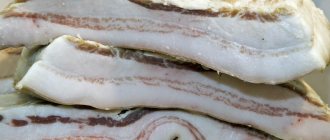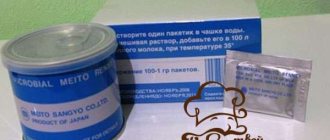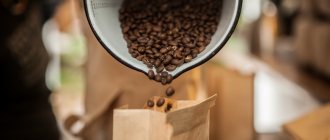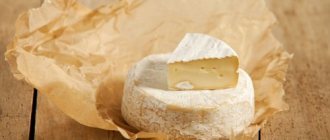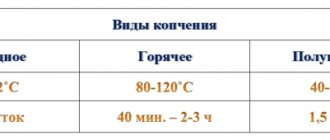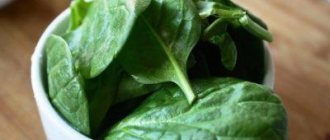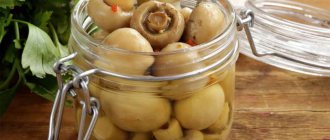In reality, wine producers are not people, but microorganisms. The responsibilities of winemakers include only creating optimal conditions (light, temperature, humidity) for the activity of wine yeast - a special type of fungus that is involved in the creation of different varieties of the noble drink. When purchasing a large batch of high-quality aged alcohol, you should study how to store wine in a closed container, and most importantly, after breaking its seal.
Shelf life of opened wine
How long can wine be stored after opening? This is an important question if you want to keep an open bottle of alcoholic drink rather than pouring the contents down the toilet. Please note that each type has its own deadlines.
Champagne and all sparkling wines
This wine is most unsuitable for storage. How long can opened sparkling wine be stored? Even re-sealed it can retain its qualities for no more than four hours.
After all, the most important thing in such drinks is the bubbles, and they come out almost immediately
That's why it's so important to finish an open bottle. There is no point in storing it for a long time, since after the bubbles come out it will taste like compote
White wine storage
How long can an opened wine of this type be stored? The shelf life can be extended to three days. After this time, the drink is only suitable for cooking, such as fish or sauce. As a last resort, you can simply pour it out.
The bottle must be tightly sealed and refrigerated. Just remember, in order not to spoil the taste of the drink, at this moment there should not be anything with a sour or bright taste in the refrigerator. After all, alcohol absorbs odors even through a cork sealed in the winery, not to mention the bottle once opened. White wine should be served chilled.
Storing an uncorked bottle of rose wine
This type of open wine has a short shelf life, just like white wine. The drink is quite light, so long-term storage will only spoil its taste.
If you want to experience the original taste and aroma of the wine, then after uncorking, store it in the refrigerator for no more than three days. After the specified time, the drink will begin to oxidize under the influence of oxygen and turn into vinegar.
How to Store an Open Bottle of Red Wine
Storing an open bottle of wine (red) will depend on its body size. (The concept of “body” among winemakers speaks of the viscosity and malleability of the wine. Tasters can easily determine this indicator by taste, but an ordinary inexperienced person cannot do this.) But it is bodyness that limits the storage of an open bottle of wine.
- Light-bodied wine is similar in quality to rose and white. It is very light, so the fruit aromas dissipate very quickly. This drink can be stored for no more than three days after opening.
- Full-bodied wine has a high sugar and alcohol content. For this reason, an open bottle of wine has a much longer shelf life - up to five days. For young wines, this is even very useful, since after being enriched with oxygen for a day or two, it fully reveals its aroma. But old alcoholic drinks are much more capricious in this regard - it is not recommended to leave them open.
Storing dessert wine
The difference between dessert wines is that they have a fairly high percentage of alcohol and a lot of sugar. They are also called sweet wines. These also include sherry, Madeira or port.
The storage of such a drink in printed form is the longest - about a week. Of course, the bottle must first be resealed and then placed in the refrigerator or other cool place.
As you can see, how long wine can be stored after opening the bottle depends on its type. Before drinking the drink again, the wine should be slightly warmed at room temperature. This will make it much more flavorful.
Let's sum it up
As you can see, the shelf life of a printed bottle of wine is short. Therefore, when planning a celebration, calculate the amount of alcohol correctly. If you have been given an expensive collection wine, it is better not to store it for a long time. Very expensive and old things need to be drunk right away, because you won’t be able to preserve them properly, no matter how much effort you put in.
Young wines can be left open, but they should not be stored for a long time either. Drink sparkling drinks immediately and enjoy the mood they create.
Study cookbooks, because many dishes are prepared on the basis of dry and dessert wines - they marinate meat, make sauces, add them to confectionery. Show your imagination and surprise your guests with new recipes - you will use up the printed wine and increase your rating among home cooks.
We wish you many holidays and romantic dates. And now you can think about storing wine no worse than an experienced sommelier.
How do you like the article?
Shelf life of different drinks
It is very difficult to unequivocally answer the question of how long wine can be stored if the type of drink is unknown. The duration of storage of an opened bottle depends on this.
- Sparkling varieties are in high esteem among men and women, but not many people know how long unfinished alcohol can be stored. Their term is short.
- Even if the container is tightly corked after drinking, the product will retain its pleasant aroma and sparkling quality for no more than 24 hours.
- The drink will simply look like water with a specific aroma; drinking the liquid will be unpleasant and unsafe.
Therefore, you should not experiment.
Light wines such as rose should also not be stored for long after opening; the best option is to drink the drink on the first day. The maximum shelf life of wine is 72 hours. True, during this time the wine will lose its individual taste, astringency, and the aroma will not be the same. White wine should also not be stored longer than 72 hours. The drink has a very light texture and contains a minimal percentage of alcohol, so the unique fruity notes begin to evaporate from the wine very quickly.
Full-bodied red wines can withstand longer storage in an opened bottle.
If kept properly, they can remain very tasty for up to 5 days.
If the wine is young, then tannin is present in large quantities. Such a drink can sit in the refrigerator for a couple of days, and on the second day the wine will reveal its taste, unique notes, astringency, and an aftertaste will appear in it. All this happens precisely under the influence of oxygen.
There are also lovers of the fortified dessert drink. It contains quite a lot of sugar and alcohol; if stored properly, the product can retain its taste and aroma for a whole week.
A little advice for those who put an open bottle of wine in the refrigerator. It is recommended to put a sticker on the container with the date the drink was opened; this approach will prevent the alcohol from spoiling, and the person who decides to drink it will not be poisoned. Every lover of light alcoholic drinks should be able to preserve the product even when opened, because an opened bottle is not always finished. If there is no way to preserve the wine, then you should freeze it or prepare some kind of dish.
- Alcohol will be an excellent ingredient for marinade.
- Meat marinated in red wine acquires a delicate taste and unique aroma.
Light alcohol can be added to desserts and baked goods, creating unusual culinary masterpieces. Everything depends only on the imagination of the hostess. Knowing how to store open wine, everyone can decide for themselves whether it is necessary at all or not. The main thing is to remember that the product may deteriorate, and if this happens, you should pour out the liquid without regret.
Most popular mistakes
We do some things completely unconsciously and don’t even understand that in this way we only speed up the process of alcohol spoilage. So, remember, if an open bottle of wine:
- If stored horizontally, the area of contact with air molecules increases. And this will inevitably end in rapid spoilage of the product.
- It is standing in direct sunlight, which means that ultraviolet radiation has already begun its harmful destructive effects. Even though wine usually comes in dark glass containers and has special protective filters.
- If it is located near heat sources, its composition changes at high speed. As a result, the product loses its aroma and original taste.
By changing the conditions, you will have a chance to preserve the product after opening and not lose its taste.
No matter how convenient it is for you to store an open bottle of wine on the windowsill or put it on the refrigerator shelf, you will have to give up this habit.
Storage tips
Basic rules for storing wine:
- The bottle should be glass, preferably dark.
- Cork the homemade only with a wooden stopper.
- Storage temperature 10-14 degrees.
- The minimum humidity in the storage area is 55%, the maximum is 80%.
- Bottles cannot be constantly moved; they must lie in one position.
- Direct exposure to sunlight is unacceptable.
Proper storage conditions will allow wine to last longer. It will retain the taste and aroma and will not turn into an unpleasant slurry. If possible, you should consider purchasing a separate wine cabinet.
If you need to purchase a large amount of wine, you can afford it, but just remember that this drink requires special storage conditions compared to vodka, cognac or whiskey. If you need to keep it for a short period of time, you can simply leave it in a cool place
If your shelf life increases, then we recommend that you pay attention to the parameters that affect the shelf life of this drink.
A little theory.
First of all, wine is not created by people, but, oddly enough, by microorganisms. Real winemakers only help them, creating the necessary conditions for excellent life activity for some bacteria, and depriving others of the possibility of existence. The first includes wine yeast, and the second includes mold and vinegar.
What determines the shelf life?
Wine is produced not by humans, but by bacteria. Specialists only maintain the necessary conditions (temperature, lighting, sugar percentage, acidity, etc.) for some microorganisms - wine yeasts - and prevent the proliferation of others that produce vinegar and mold.
But even after the drink is placed in bottles, they do not die there, but only “go to sleep” and come to life again under favorable conditions. The awakening of any bacteria negatively affects the drink, so during storage the main thing is to avoid this.
The shelf life of wine depends on the following components:
- Type of wine. More specifically, on the level of alcohol, sugar, acid and tannins.
- Composition. The use of special grape varieties allows wine materials made from them to age for a longer period of time.
- Production technologies. Modern alcohol production, to reduce the cost of the final product, very often uses analogues of natural ingredients and preservatives, which increases the warranty period, but reduces the quality of the drink.
Is there an expiration date
Yes, the guaranteed shelf life of a drink is a period during which there will be no physical and chemical changes in color, taste, smell, sediment and consistency, which is not provided for by technical production standards.
In a closed bottle
The concept of shelf life of wine includes two:
- the so-called warranty shelf life of wine, which is written by manufacturers on the label, neck of the bottle or cast on the bottle itself;
- actual expiration date.
This confuses people who read the novels of Alexandre Dumas, where musketeers feasted on ancient wines. It's simple. The guaranteed shelf life is a period during which undesirable processes will definitely not occur with the wine. For this purpose, manufacturers introduce various additives and preservatives into the drink.
The shelf life of wine generally varies for different varieties. The vast majority of white wines can be stored for two or three years, red wines from two to ten.
How long does French wine have a shelf life? There are some rare brands of French wine, from Bordeaux and Burgundy, that last up to a hundred years!
How long does sparkling wine last? In Russia this is not stated in GOST; it is believed that the shelf life is unlimited.
This is understandable, since the carbon dioxide contained in the bottle preserves the wine and does not allow any unwanted chemical reactions to occur in it; it is enough just to remove it from sunlight
And check the strength of the cork: it is important that gases do not escape from the bottle.
In the open
Once uncorked, wine cannot be stored. It instantly loses its taste, volatile substances evaporate, and air oxygen quickly changes the composition of the substances, and the wine is transformed into vinegar.
An open bottle should be stored for no more than three days. You can also put it in the refrigerator: yes, both heat and cold have a detrimental effect on the drink, but in this case, the wine will spoil much faster in the warmth. Just don't put an open bottle in the freezer.
Made of plastic material
As studies have shown, plastic is by no means airtight and allows various gases to pass through, which are extremely harmful to wine. This is why you should not store homemade drinks in plastic bottles.
In addition, alcohol is a solvent and can dissolve the inside of a plastic bottle, releasing toxic substances into the wine. If you poured wine into a plastic container somewhere, for example, selling it on tap or preparing it at home, then its shelf life will be 1-2 hours, and in order to extend this period, the drink must be poured into a glass bottle.
In a tetra pack
Wine bottled in tetrapacks accounts for up to 40 percent of the market in some regions. It is technologically convenient, weighs less and costs less.
The shelf life in tetrapacks is close to the shelf life in bottles, since the inner surface of tetrapacks is made in such a way that it does not allow gases and sometimes light to pass through, and interacts weakly with wine.
In this case, it is best to focus on the expiration date indicated by the manufacturer, but this does not mean that older wine cannot be drunk. If you come across an old bottle of wine, you need to see if the tetrapak is swollen, and if it is, throw it away. If the package is intact, you can open it and try it; if the drink is not sour, then you can drink it.
What kind of container is needed
In what container cognac is stored is a topic about which we can talk a lot. An oak barrel is considered the best container. The quality of the drink in such containers only improves over the years. The drink becomes stronger and more aromatic. This storage method is used if the product needs to be preserved for as long as possible.
The shelf life of cognac in a glass bottle will also be quite long. But the specific saving time is indicated in each individual case on the label. A glass container is not capable of imparting to the drink the qualities that it obtains during storage in barrels.
The question of how long you can store cognac in a flask is no less relevant these days. There are a huge number of metal containers for alcoholic drinks on sale for different tastes and possibilities. If the container is made of a material that is not capable of oxidizing when interacting with an aggressive environment (strong alcoholic drinks). Storing draft cognac in such conditions will be no less than in a bottle.
It is important to keep the cap screwed down as tight as possible to keep the container as sealed as possible. But most often such flasks are made of steel, copper, aluminum
These metals are capable of interacting with alcohol, which will certainly affect the composition of the contents of the container. Already on the third day, such storage of cognac will end with it losing quality.
Another of the most common questions is: can cognac be stored in a plastic bottle? The use of such containers is possible exclusively for transporting strong alcoholic beverages or storing them for no more than 2 - 3 days. The interaction of alcohol with plastic leads to the formation of a large amount of toxic substances, which make further use of the product unsafe for health.
Whatever container the alcoholic drink is kept in, it must be tightly sealed. Otherwise, the product will quickly begin to “fade out” and lose strength.
It is important to prevent liquid from interacting with plastic stoppers. This material is not resistant to alcohol and can change the quality of the product.
Bag - in - box
It is possible to store draft cognac in a container made of a special material resembling dense polyethylene (Bag - in - box). In this case, the packaging is placed in a rigid box, which is convenient to store and transport. Such containers are usually equipped with a tap, which allows you to pour alcohol into glasses.
One of the disadvantages of using a “beginbox” is the inconvenience during a spill. It will not be possible to pour the entire drink out of the container without leaving a trace. It will have to be turned over in a certain way. Leakage of the contents of the container and additional difficulties when washing it and treating it with disinfectants are also common.
Shelf life
Some wines are not intended for long-term aging and are good only when young, for example, ordinary products from Muscat varieties. Most table specimens should be drunk within a year, sometimes within 2–3 years. The exception is aged and collectible drinks, which only get better with age.
Shelf life of ordinary white wines (with rare exceptions): 2-3 years. Some examples of elite drinks, for example, Burgundy Chardonnay, can be aged for up to 20 years. But such wines also cost a lot of money.
Shelf life of simple red wines: 2-10 years. French products made from dark fruits, made in famous wine regions, stand up well to centuries of aging. Every 10 years it only gains in price and quality.
Opened wine is stored in the refrigerator, but not for long:
- Red – up to 5 days.
- White and pink – no more than 3 days.
- Sparkling wine of any kind – 24 hours.
- Dessert – about 1 week.
Like any food product, wine spoils: after uncorking, air enters the bottle and the drink begins to oxidize. A vacuum stopper or pouring into a container of a smaller volume can slightly extend the shelf life of opened products.
Does the drink have an expiration date and what is written in GOST?
In accordance with the legislation of the Russian Federation, the manufacturer must indicate the expiration date of the product on the product label. This is the period during which, according to the manufacturer, no negative changes will occur to the product.
State standards also say that the shelf life is set by the manufacturer depending on the specific item, for example, GOST 32030-2013. As a rule, the shelf life of most dry and other wines is two years, but it is recommended to read the label before purchasing.
According to GOST 9218-2015, wines are transported by rail, water, and road transport.
According to GOST 32061-2013, table wines are kept in oak barrels or tanks, in well-ventilated rooms, without access to foreign odors, or in open areas. Protective coatings of containers must be made of stainless or enameled steel, acceptable in an approved manner for the purpose of interaction with products of this type. Containers made from other raw materials acceptable for interaction with products of this type are allowed.
Additional ways to store wines
There are several known methods that can significantly slow down the effect of oxygen on wine, increasing the “life” of uncorked bottles.
• Vacuum plugs. When using a vacuum stopper, the air is pumped out of the bottle and it is hermetically sealed for several days.
• Application of gas. This is one of the most popular ways to preserve the quality of wine after uncorking the bottle. A special device replaces air saturated with oxygen with inert gases - nitrogen or argon.
Is it possible to increase the shelf life of wine?
How to properly store an open bottle of wine? This is an important question if you want to drink wonderful wine in a couple of days, and not try compote. There are several methods and devices that can increase the shelf life of opened wine.
Vacuum plug
This is a special device for storing wine in open bottles. Such a stopper pumps air out of an open bottle, tightly sealing it around the edges. According to the developers of this device, it creates a vacuum in the bottle, preventing oxygen from oxidizing the drink.
However, some winemakers believe that creating a perfect vacuum in the bottle, i.e. absolutely without oxygen is impossible. The advantage of the cork is that it fits more tightly to the neck.
Another disadvantage of using such a device is that by pumping air out of the bottle, carbon dioxide, as well as some of the aroma, leaves. Therefore, when choosing this method to preserve an open container with a drink, remember the loss of taste.
Where to store opened wine
The correct answer to the question of how to store opened wine is only cool or cold. For example, in the refrigerator. This is the best option if after the celebration you have one or more unfinished bottles left.
Of course, if you have a lot of uncorked bottles, then it is better to seal them tightly and lower them into the cellar. But you need to use them as quickly as possible.
If you have red wine left, remember that before serving, you need to keep the uncorked bottle at room temperature for about forty minutes to return the aroma to the drink.
Replacing a large container with a smaller one
This is another way to store an open bottle of wine. It is considered the most effective. Suitable bottles should be dark and have a tight-fitting cap. Naturally, their size should be somewhat smaller.
Wine must be poured into containers to the top so that no oxygen remains in them. This is the only way to extend the shelf life of the drink to three or even four days.
Use of argon or nitrogen
This method is mainly used in large wineries when wine samples are taken from barrels. By adding one of the gases or a mixture of them to the barrel, you can protect the wine from oxidation, as they settle to the bottom, thus replacing oxygen.
In cylinders for household use, carbon dioxide can be found in the mixture, which is not inert, and therefore easily penetrates into the wine. It is best, of course, to buy cylinders with pure argon. Cylinders should be stored in the dark and cold.
Freezing wine
One option for storing wine after opening is to freeze it. If you decide not to finish the wine, then simply pour it into molds and put it in the freezer.
After some time, you can use the frozen cubes to prepare various dishes, such as meats, sauces, marinades or desserts.
Latest advances in winemaking
One of the interesting wine preservation systems is the Coravin system. The principle of its operation is very simple. The device looks like a kind of pistol and has a needle that pierces the bottle cap.
Next, argon is supplied to the bottle, and the wine under its pressure is poured into a glass. As soon as the needle is removed, the hole in the bottle closes up on its own. The wine does not spoil, and even continues to ripen.
The device is not cheap, however, it pays for itself very well for collectors who have very expensive items in their wine library. Moreover, now this device is being brought to perfection, because there have been cases when a bottle of wine exploded (no more than seven times in the entire history of its existence).
Can wine be stored open? The answer to this question is obvious. With proper storage and the necessary equipment, the drink can be preserved for some time. But exactly how long open wine can be stored depends only on its type. For light wines it takes less time, but for heavy and dense wines it takes a little longer. As a last resort, you can simply prepare a delicious dish from an aromatic drink.
We recommend growing your own mushrooms at home. Unique and affordable technology. TRY TO GET A HARVEST OF FRESH AND TASTY MUSHROOMS IN JUST A MONTH! All details and ordering by .
Unfinished wine in the kitchen
Can wine be stored open in the refrigerator? If you still have an open wine bottle, but don’t want to use it for its intended purpose, its contents can easily come in handy in cooking, as a component for sauces, marinades, desserts and more. The light tartness and exquisite piquancy of the bouquet will decorate the dish in a new way and reveal it from a different perspective.
You can use the started wine product as a main ingredient, rather than an addition to dishes, by preparing, for example, homemade ocet. To do this, you will need to move the contents into a covered container without air access, thereby starting fermentation. The liquid will be ready when a whitish coating called the mother culture of bacteria appears.
A good use for unfinished wine would be to create a sweet syrup. But only if the filling has decreased by 1-2 glasses. To prepare, you will need to combine the base with a small mug of sugar, put on medium heat and bring to a boil for 30-40 minutes. Then let it cool to room temperature and put it in the refrigerator. You can also add a little cinnamon for a more pleasant and rich aroma. This delicacy goes well with desserts, as well as as a decoration for waffles, fresh fruit and ice cream.
Where is the best place to store wine?
Let's list the main ways to keep wine at home in order of worsening conditions:
- A clean wine cellar/cellar with suitable humidity levels and temperatures.
- Climate controlled cabinet/dedicated refrigerator.
- A separate cool room/zone in the house with good ventilation, protected from direct light.
- Closed horizontal shelves, racks, drawers, etc.
- Open vertical shelves, drawer racks, etc.
Exclusive offers
For eccentric people, original wine storage options have been invented:
- Under the water. An unusual method was invented in Spain: for a couple of hundred euros, everyone can get a bottle of wine “from the bottom of the sea.” Alcohol is located under the water column in the Bay of Biscay, at a depth of 20 meters. The temperature there is the most suitable: from 11 to 15 °C. The horizontal position is also respected.
- Some wineries are ready to offer their storage space for rent: ancient cellars - what could be better for collectible items? However, the cost of such services is kept secret and is available only to a select few.
Remember that wine is practically a living creature that “breathes,” “ripens,” and “ages.” When planning long-term storage of drinks, care must be taken to create suitable conditions. Otherwise, it is better to purchase wines immediately before drinking, which will save you unnecessary hassle and save space.
Opened wine, how long is it allowed to be stored on average?
How long can opened wine be stored is a fairly relevant topic.
The first thing you need to pay attention to is that the shelf life of an alcoholic drink is directly influenced by its type. Each drink has its own individual characteristics that affect its taste and aroma.
For maximum long-term storage, it is important to reseal with a vacuum stopper and put the container in a cool place. At the same time, look for a container for the product that matches the volume
Is it possible to store wine in plastic bottles - yes, it is possible, but provided that dark plastic is used. There can be no other options.
Features of storing an open bottle of red wine
How long open wine (red) is stored is largely influenced by the product’s potency (level of viscosity, viscosity). An experienced connoisseur will easily recognize it after taking a small sip. However, this means nothing to an unprepared person, and everyone’s taste preferences are different. Proper storage of opened red wine:
How to tell if wine has gone bad
If a drink made from vine berries has spoiled, then drinking it risks poisoning. This most often happens when a person decides to store opened wine in the refrigerator, unaware that low temperatures will not stop the oxidation process.
When a consumer lives on the ground and stores products in cellars, he can immediately understand that it is spoiled by the specific smell in the room.
Common ways to help assess the condition of a product:
- You can determine whether this is true using a simple test. Dip your finger into the liquid and try a drop on your tongue. If it starts to pinch, the wine has gone sour. The appearance of a vinegary taste indicates that the drink has begun to ferment again.
- Every winemaker knows that this type of alcohol has acidity, but within normal limits. A characteristic sign of fermentation is the formation of foam along the edges of the liquid. This means that oxygen has entered the bottle and the product begins to sour.
- If mold is found on the bottle cap, then the spoilage is due to poor quality storage. It may be that the room is too hot, humid, or that the container is occasionally exposed to sunlight.
- Upon detailed examination, grains and fibers can be found in the composition. This situation indicates that pathogenic processes have begun in the wine. When sediment appears at the bottom of the bottle, this is also a cause for concern.
- A spoiled wine drink loses color - it becomes cloudy, and the composition is heterogeneous.
Watch the video: “How to tell if wine is spoiled? How long do opened wines last?
At what temperature should it be kept?
Both low and high temperatures are harmful to this product. Experts consider the most optimal temperature to be between +10 and +14 degrees.
Can wine be stored in the refrigerator? You can keep a started bottle in the refrigerator for a couple of days, but this place is absolutely not suitable for storage for the following reasons:
- temperature is lower than required;
- no ventilation;
- there is constant vibration;
- the silence regime is broken.
In addition, the humidity in the refrigerator has different indicators than those required for aging the drink.
If you violate the rules of maintenance, you cannot count on a good result, even if you manage to place the bottles horizontally.
Recommendations
To extend the life of your favorite drink, you must adhere to a number of rules:
- Temperature 10-15ºС is optimal. Higher temperatures lead to undesirable chemical reactions and oxidation. A low degree interrupts the ripening process; after cooling, the taste cannot be restored. Changes of 5-10ºС can destroy the properties of winemakers’ products in a matter of hours.
- Air humidity 60-80% - high humidity, leads to mold. Low humidity causes the cork to dry out and lose its seal. It is important to monitor this indicator
- Exposure to light causes the contents of the bottle to rapidly age. In this regard, it is best to choose a dark glass container and ensure that there are no light sources in the room.
- Eliminating vibration is an important factor when organizing storage.
- Wines should be laid horizontally (except for fortified ones): this ensures the safety of the closure and sealing.
Factors affecting shelf life
The shelf life of wine can be influenced by the following factors:
- Humidity level. At low rates, the cork dries out, causing it to crumble and maintain a tight seal less well. At high humidity levels, the liquid begins to mold and deteriorate.
- Temperature. At low temperatures the product completely loses its properties. The taste and aroma do not return after freezing. Under the influence of heat, oxidation processes occur faster, which accelerates the deterioration of the product.
- Environment. When stored in the refrigerator, alcohol may become saturated with the smell of other foods. This drink can still be consumed, but aesthetes will not enjoy the process. Additionally, the possibility of exposure to sunlight should be taken into account. Even artificial light negatively affects the quality of the product, while natural light leads to rapid spoilage.
- Sealing of packaging. If the cork does not block air access, the shelf life is reduced several times. The emergence of natural ventilation accelerates the occurrence of oxidative processes.
- Packaging material. The preferred material is glass because... it does not react with the drink. Plastic containers should not be used for storage. In cardboard packaging, the drink spoils faster. The material of the cork also matters. If it is plastic, the bottle may not be airtight enough.
- Variety For example, a fortified product is stored longer than, because. in the first the composition has been changed. Due to the manufacturing technology and characteristics of sparkling drinks, they quickly lose their properties.
- Area of contact with oxygen. The air helps convert the drink into vinegar.
What happens to wine after it is opened?
In the process of “ripening”, any wine reveals its capabilities, so over time you can notice some metamorphoses in it:
- Hue. White becomes brighter, red and burgundy, on the contrary, become less saturated.
- Taste. The sourness and alcohol flavor acquire more muted, harmonious shades, and the drink develops integrity and aftertaste.
- Aroma. Adult drinks have the aroma of dried fruits - figs, raisins, nuts. Aged French wines contain heavy shades of gorse, jasmine, violet, and rose.
Immediately after opening a barrel or uncorking a bottle, a lot of air enters it. This process is called aeration, and in the first few hours it helps the wine open up. According to the rules, the drink is poured into a decanter - a bottle with a wider neck, which speeds up the process of oxygen saturation. The optimal time for aeration is from 15 minutes to 1 hour.
After the specified time, this element, vital for a living organism, begins to quickly “age” the drink, activating oxidative processes. The wine gradually loses the intensity of its taste characteristics, and after 2-3 days, the floral and fruity notes completely disappear, giving way to acetic and sour tones. Even if the bottle is quickly corked, some of the air will still remain inside the vessel and will continue to negatively affect the wine.
If the storage rules are neglected, the seal of the vessel is broken, or if it comes into contact with ultraviolet radiation, the wine product may become unusable. A drink that has lost its taste and beneficial properties is easily identified by the following signs: sour smell, vinegary taste, the appearance of turbidity and mold.
How long does an open bottle of wine last?
Immediately after opening the bottle, the contents begin to behave differently depending on the type of wine:
• Sparkling wine. They retain their qualities throughout the day with the cap closed. As soon as a bottle of such wine is uncorked, it immediately begins to fizzle out. If you do not close the bottle with a cork in time, the wine will not “last” even four hours.
• White wines. They retain their qualities for 1 to 3 days. The fruity aromas disappear very quickly after opening the bottle. In fortified white wines this process occurs more slowly. For example, Chardonnay aged in oak barrels can retain its qualities longer than Riesling or Sauvignon Blanc.
• Rose wines. The shelf life of opened bottles of rose wines is from 1 to 3 days. The aroma of light rose wines, like white wines, quickly evaporates after opening the bottle. Dense species can retain their uniqueness for several days.
• Light-bodied red wines. You can store an open bottle of this wine for 1 to 3 days. The wines are endowed with a pleasant fruity aroma, which tends to evaporate quickly.
• Full-bodied red wines. After uncorking, bottles of wine retain their quality for 1-5 days. Types such as Cabernet Sauvignon and Syrah have the ability to even slightly improve their quality within a few days after opening. This applies to “young” wines, in which tannins predominate. Oxygen softens such wine, revealing its bouquet as fully as possible. However, after a few days, this effect disappears.
• Sweet and fortified dessert wines. The shelf life of such wines after opening reaches 7 days. The high concentration of alcohol and sugar makes it possible to resist the effects of oxygen molecules longer. We are talking about such varieties as “Sauternes”, “Port”, “Kokur”, “Sherry”, “Madera”.
In plastic
If a plastic bottle has the PETE or HDPE mark on it, it can be filled with wine. Although theoretically homemade wine can last 3-5 months in a hermetically sealed plastic container, it is still not recommended.
Plastic bottles allow light to pass through; when interacting with alcohol from the inside, the plastic begins to dissolve, releasing harmful compounds into the drink. After purchasing bottled wine in stores, it is ideal to drink it within 24 hours.
In a tetra pack
In terms of shelf life in Tetrapak boxes, wine is close to its bottled counterparts. Opened dry wine, like other types of noble drink (pink, white, fortified, sweet, etc.), regardless of the type and color, is stored longer in a container with a tap. This is explained by the complete lack of access to air during a spill; the tetrapack retains its tightness. Wines in this package can last up to 2 weeks.
In a tetra pack
In standard boxes with lids, wine can be stored for up to 5 days, it all depends on the conditions, type and composition of the wine.
